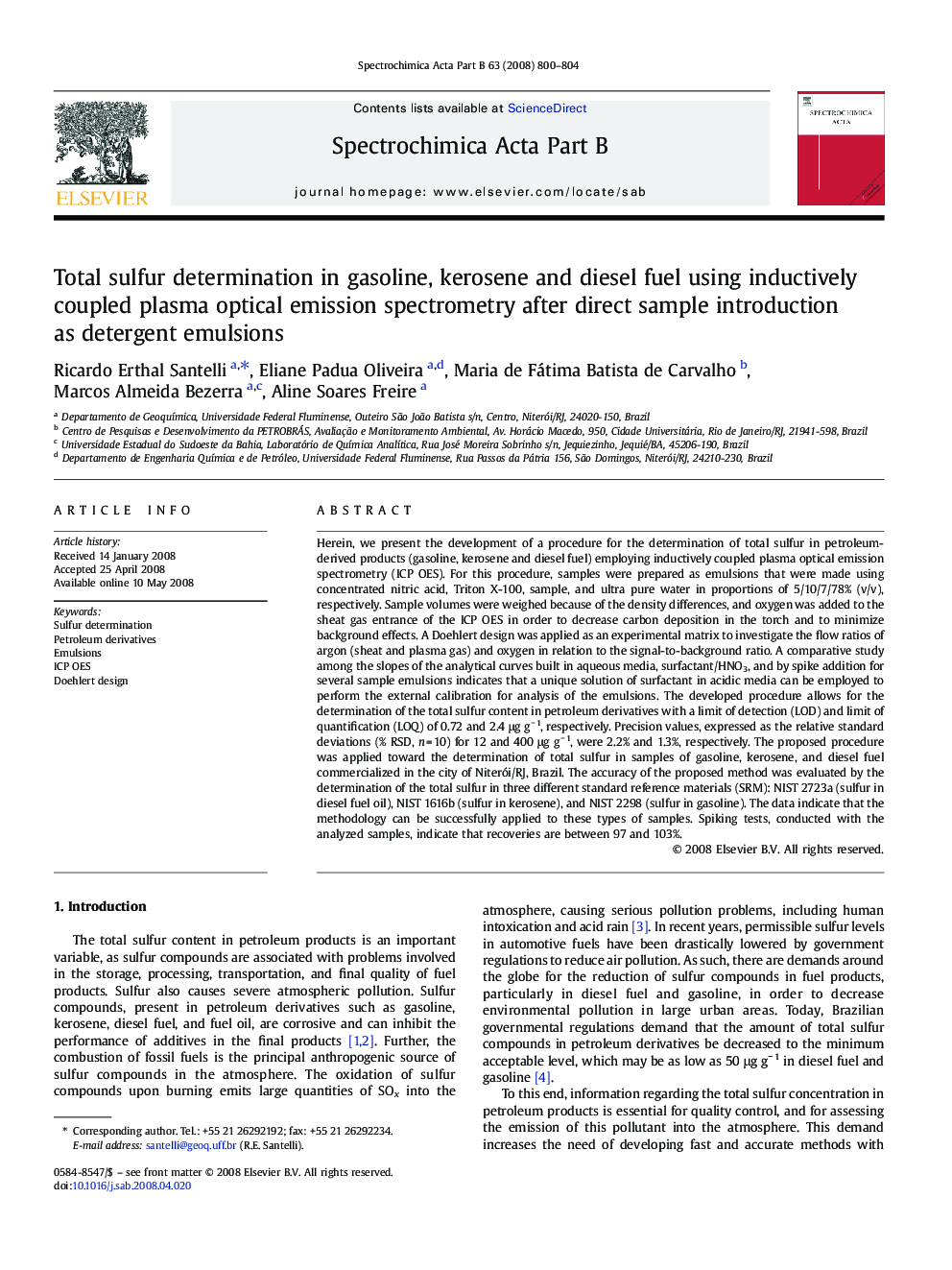| Article ID | Journal | Published Year | Pages | File Type |
|---|---|---|---|---|
| 1241071 | Spectrochimica Acta Part B: Atomic Spectroscopy | 2008 | 5 Pages |
Herein, we present the development of a procedure for the determination of total sulfur in petroleum-derived products (gasoline, kerosene and diesel fuel) employing inductively coupled plasma optical emission spectrometry (ICP OES). For this procedure, samples were prepared as emulsions that were made using concentrated nitric acid, Triton X-100, sample, and ultra pure water in proportions of 5/10/7/78% (v/v), respectively. Sample volumes were weighed because of the density differences, and oxygen was added to the sheat gas entrance of the ICP OES in order to decrease carbon deposition in the torch and to minimize background effects. A Doehlert design was applied as an experimental matrix to investigate the flow ratios of argon (sheat and plasma gas) and oxygen in relation to the signal-to-background ratio. A comparative study among the slopes of the analytical curves built in aqueous media, surfactant/HNO3, and by spike addition for several sample emulsions indicates that a unique solution of surfactant in acidic media can be employed to perform the external calibration for analysis of the emulsions. The developed procedure allows for the determination of the total sulfur content in petroleum derivatives with a limit of detection (LOD) and limit of quantification (LOQ) of 0.72 and 2.4 μg g− 1, respectively. Precision values, expressed as the relative standard deviations (% RSD, n = 10) for 12 and 400 μg g− 1, were 2.2% and 1.3%, respectively. The proposed procedure was applied toward the determination of total sulfur in samples of gasoline, kerosene, and diesel fuel commercialized in the city of Niterói/RJ, Brazil. The accuracy of the proposed method was evaluated by the determination of the total sulfur in three different standard reference materials (SRM): NIST 2723a (sulfur in diesel fuel oil), NIST 1616b (sulfur in kerosene), and NIST 2298 (sulfur in gasoline). The data indicate that the methodology can be successfully applied to these types of samples. Spiking tests, conducted with the analyzed samples, indicate that recoveries are between 97 and 103%.
